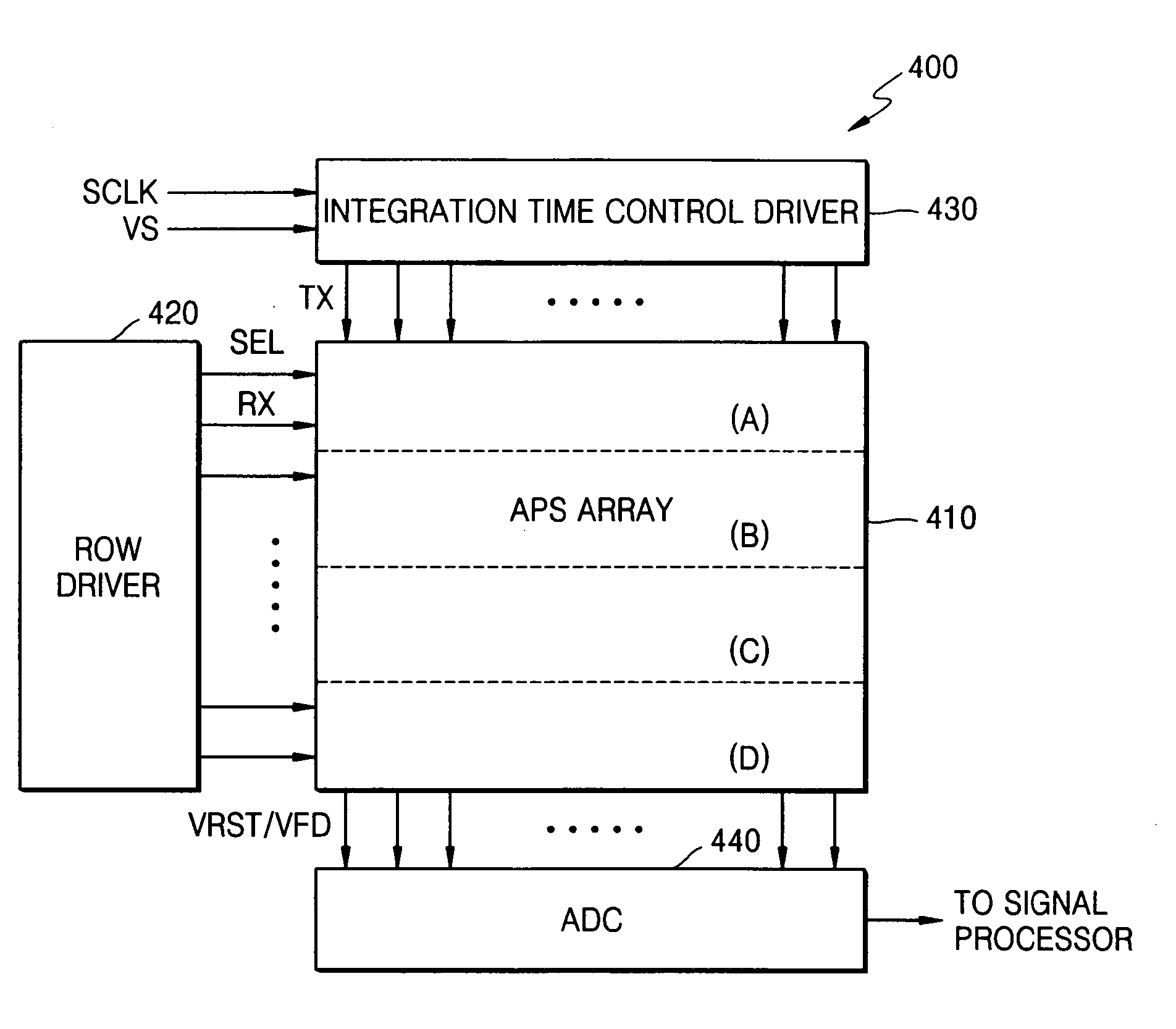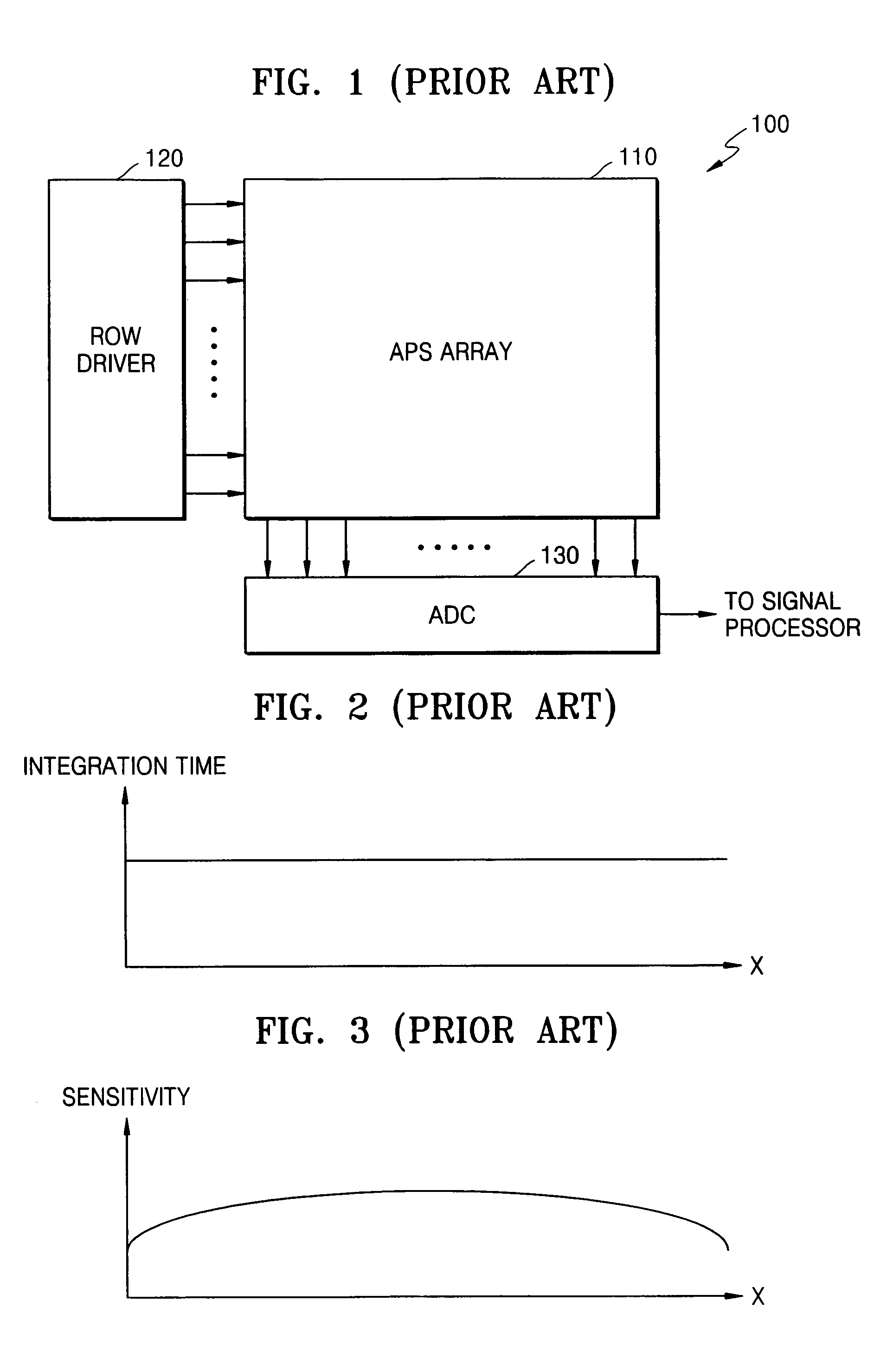Solid-state image-sensing device that compensates for brightness at edges of a display area and a driving method thereof
a solid-state image and display area technology, applied in the direction of television systems, instruments, gearing, etc., can solve the problem of increasing quantum noise, and achieve the effect of reducing sensitivity, low signal-to-noise ratio (snr), and not increasing quantum nois
- Summary
- Abstract
- Description
- Claims
- Application Information
AI Technical Summary
Benefits of technology
Problems solved by technology
Method used
Image
Examples
Embodiment Construction
[0026]FIG. 4 is a block diagram of a complementary metal-oxide semiconductor (CMOS) image sensor (CIS)-type solid-state image-sensing device 400 according to an exemplary embodiment of the present invention. Referring to FIG. 4, the CIS-type solid-state image-sensing device 400 includes an active pixel sensor (APS) array 410, a row driver 420, an integration time control driver 430, and an analog-digital converter 440.
[0027]The APS array 410 is a two-dimensional array of pixels. The pixels of the APS array 410 are each configured in a circuit as illustrated in FIG. 5. Referring to FIG. 5, a pixel of the APS array 410 outputs a photoelectrically converted image signal VFD generated by a photo diode PD in response to a transmission control signal TX in a row selected by a row selection signal SEL, and then generates and outputs a reset signal VRST in response to a reset signal RX.
[0028]As shown in FIG. 5, each pixel includes four metal-oxide semiconductor field-effect transistors (MOS...
PUM
 Login to View More
Login to View More Abstract
Description
Claims
Application Information
 Login to View More
Login to View More - R&D
- Intellectual Property
- Life Sciences
- Materials
- Tech Scout
- Unparalleled Data Quality
- Higher Quality Content
- 60% Fewer Hallucinations
Browse by: Latest US Patents, China's latest patents, Technical Efficacy Thesaurus, Application Domain, Technology Topic, Popular Technical Reports.
© 2025 PatSnap. All rights reserved.Legal|Privacy policy|Modern Slavery Act Transparency Statement|Sitemap|About US| Contact US: help@patsnap.com



